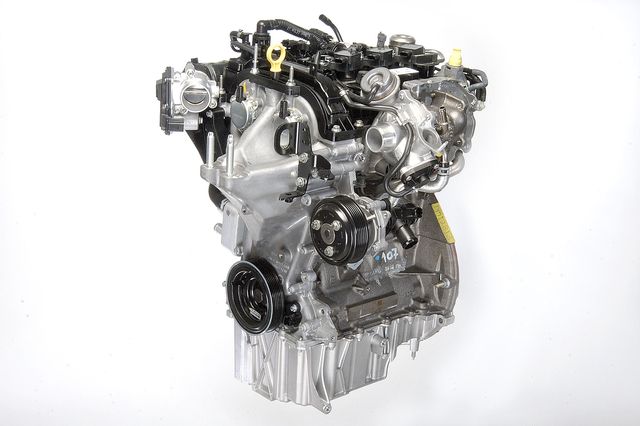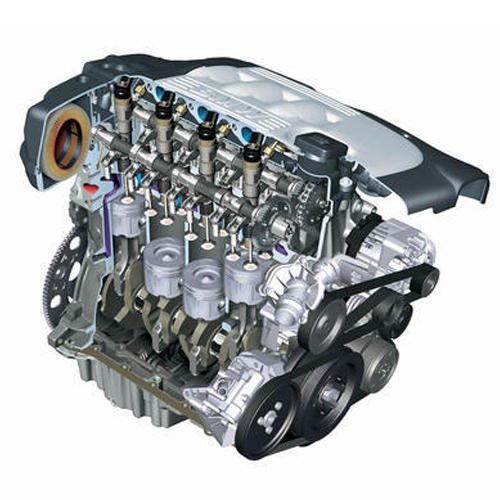‘A 3 cylinder engine is inferior to a 4 cylinder’ That’s the myth we’re going to bust here at GoMechanic.
The 3-cylinder vs 4-cylinder debate started when cars having 3 cylinders started behaving in an odd manner in their early development stage. There were complaints about the balancing and tuning of the engine, and the engines tend to make more noise.
And it’s not just a fight about the 3 vs. 4 but there is an age-old notion which implies that odd-numbered cylinders generally tend to be less balanced, generates more vibrations, and the engineers even need to add weights to balance the overall weight of the vehicle.
With the advancements in technology, cars have become more fuel-efficient, faster and better.
So, let’s have a look and identify what’s the difference between the two different cylinder configurations in a car engine.
Suggested Read: 10 Things About AMT Cars (Automated Manual Transmissions)
What is a car cylinder?

While the engine runs the car, it’s the cylinders that run an engine. In simpler words, a cylinder is the powerhouse of a car engine.
They are cylindrically shaped spaces in a car engine that has the pistons located in it. When the fuel/air mixture is ignited in the combustion chamber above a piston, it is driven down through the cylinder and, via connecting rods, rotates the crankshaft before being pushed back up to exhaust unburned gases.
Suggested Read: DCT vs CVT vs AMT | Choose The Best Transmission
The car cylinder is the place where the pistons of an engine do its movement through the crankshaft inside the rings.

Let’s take an example. When you run your car, the cylinders perform their movement through the rings as mentioned above. Now, in a 3 cylinder car, it’d be 3 cylinders performing the movement against 4 cylinders in a 4 cylinder vehicle.
The top of the cylinders is covered in order to stop the pressure from escaping during compression and power strokes.
3 Cylinder vs 4 Cylinder: Comparison

The main and the most obvious difference between the two engine configurations lies within the number of cylinders that the two engines have. While one has 3 cylinders working continuously, the other one has 4.
Two engine configurations have more differences that should be considered. The 4 cylinder generates power at every 90-degree rotation of the crankshaft whereas a 3 cylinder engine generates power at every 120-degree rotation of the crankshaft of the engine.
You might also like: How BS6 Petrol and Diesel Engines Reduce Emissions
This difference in the power generation, timing and technique make the two engines differ drastically from each other based on performance, usage, fuel consumption and a lot more.
3 Cylinder Vs. 4 Cylinder: Advantages & Disadvantages
A 3 cylinder engine has some advantages as well as some disadvantages which should be looked into before using one. Let’s look at some of them.
3 Cylinder Engines | Advantages
- Better Fuel Efficiency: The 3 cylinder engines, due to the lesser number of cylinders than a 4 cylinder engine consumes a lesser amount of fuel in running the engine. The lesser amount of cylinders makes it fuel-efficient and hence a vital choice for smaller cars which market themselves based upon their mileage.
- Lower Costs: The engine is one of the most vital parts of a car, and when the manufacturer has to use one lesser amount of cylinder in building the engine, the cost comes down drastically. Hence, cars with three cylinders tend to be less costly.
- Bigger Interiors: The engines with fewer cylinders, make the engine smaller, making the engine bay smaller and leaving more space for the manufacturer to work on the interiors and making it roomier.
- Lower Frictional Losses: The lesser number of cylinders doing metal to metal movements makes the amount of friction go down, therefore reducing the fuel consumption and a better and efficient movement.You Might Also Like: FWD vs RWD vs AWD vs 4WD | Car Drivetrains Explained
3 Cylinder Engines | Disadvantages
- Less Responsive Engine: The lower amount of cylinders makes the engine respond in a bit delayed manner. Although the difference seems to be negligible, the difference can be felt to someone who has driven or is used to driving a 4 cylinder.
Due to the difference in the way the pistons are arranged in a 3 cylinder design, which brings in the delay of half a cycle between the power strokes. - Not Refined: A 3 cylinder engine requires more work than a 4 cylinder engine due to the lower number of cylinders present. The 3 cylinders perform most of the work against the 4 cylinders which makes them a tad bit noisier than their 4 cylinder counterparts.
4 Cylinder Engines | Advantages
To understand the supremacy that the 4 cylinder enjoys in the market over its 3 cylinder counterpart, let’s look at some of the advantages as well as the disadvantages of the 4 cylinders.
- Equitable power distribution: The 4 cylinder car tends to have the power more evenly distributes as the firing order does not have a lag which makes them perform equally good at lower and higher RPM.
- More Responsive: The engine is more responsive in a 4 cylinder engine as the lag in the firing order of the engine is not present as it is in the 3 cylinder engine.
- Refined Engine: The 4 cylinders work continuously and are extremely refined. With a 4 cylinder engine running the balancing is perfect when combined with a 4 stroke engine (intake, compression, power, exhaust) and the engine runs without any lags.
4 Cylinder Engines | Disadvantages
- Expensive: A 4 cylinder engines are usually more expensive as the manufacturer has to involve one extra component so that makes sense.
- Higher Fuel Consumption: The fuel consumption in a 4 cylinder engine is a bit on the higher side as there is much more weight involved when it comes to a 4-cyl engine while there also is another factor that rules in, i.e. the increased friction of the cylinders.Suggested For You: Company Fitted CNG vs Aftermarket CNG | Myths Busted!
3 Cylinder vs 4 Cylinder | Conclusion
The conclusion of this comparison cannot be based upon the fact that which engine type is better than the other and which one lags behind the other in different aspects.
This is because both types are developed and designed to cater to different needs and have different consumers which they have to serve.
If you are someone who is a power aficionado and if the performance of your vehicle ticks your preference list above the other aspects then go for a 4 cylinder vehicle which will suit your needs perfectly.
On the other hand, if you are someone who’s buying a car for the first time, or the price and mileage of the vehicle take the front seat for you in the preference list then we’d suggest you go for a 3-cyl engine which will meet your needs perfectly.
At the end of the day, choosing a car will lie on your personal preferences rather than the brochures and manuals published by the manufacturers.
Study your engine and choose wisely!






[…] Suggested For You: 3 Cylinder vs 4 Cylinder Engine: Performance, Efficiency, Maintenance […]
Two engine configurations have more differences that should be considered. The 4 cylinder generates power at every 90-degree rotation of the crankshaft whereas a 3 cylinder engine generates power at every 120-degree rotation of the crankshaft of the engine.
THIS IS WRONG! A 4-cycle engine goes through 720 degrees of crankshaft rotation to complete a single power stroke. Intake down stroke 180 degrees of crank rotation to reach bottom dead center. Compression up stroke 180 degrees od crank rotation to reach top dead center. Ignition down stroke 180 degrees to reach bottom dead center, and finally the exhaust up stroke 180 degrees of crankshaft rotation to reach top dead center again. The crankshaft has completed two 360 degrees of crankshaft rotation to complete all four steps in a single power stroke. A V-8 has a power pulse every 90 degrees of crankshaft rotation. A 6-cylinder engine has a power pulse every 120 degrees of crankshaft rotation. A 4-cyliner engine has a power pulse every 180 degrees of crankshaft rotation. A 3-cylinder engine has a power pulse every 240 degrees of crankshaft rotation. Divide 720 by the number of cylinders that an engine has to arrive at how often in degrees that a power pulse occurs in a given engine.
Hey Ron,
You definitely got a commendable knowledge of the engines. Thank you for pointing that out. Readers like you bring out the maximum in our writers. Well yes, the firing interval in a 4-stroke engine with a flat plane crank is 180 degrees. This means, at every 180 degrees of crank rotation, there is a power stroke in the engine (one of the cylinders). However, this is not the case with a cross-plane crank. In this, the firing interval is as follows 180 degrees, 90 degrees, 180 degrees, and 270 degrees. Hope that helps; stay pinned 🙂